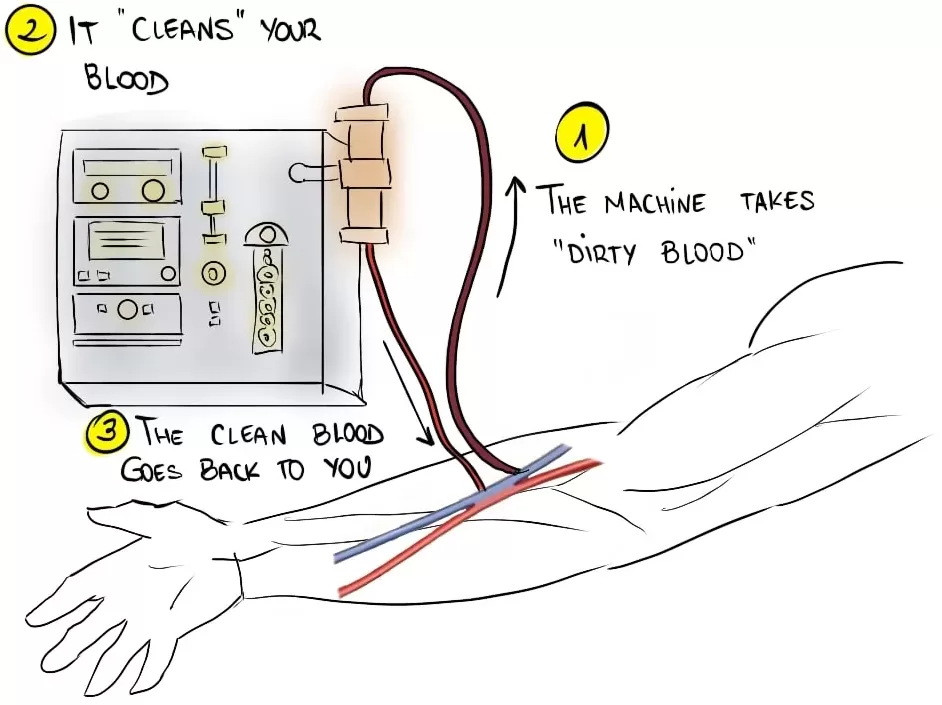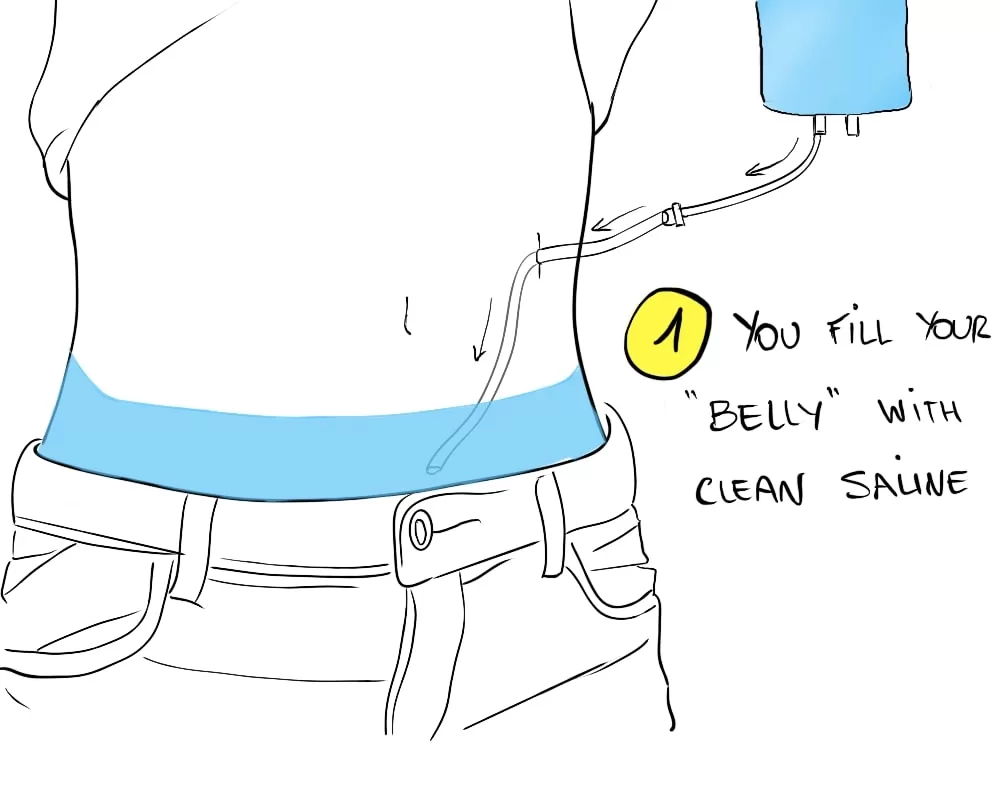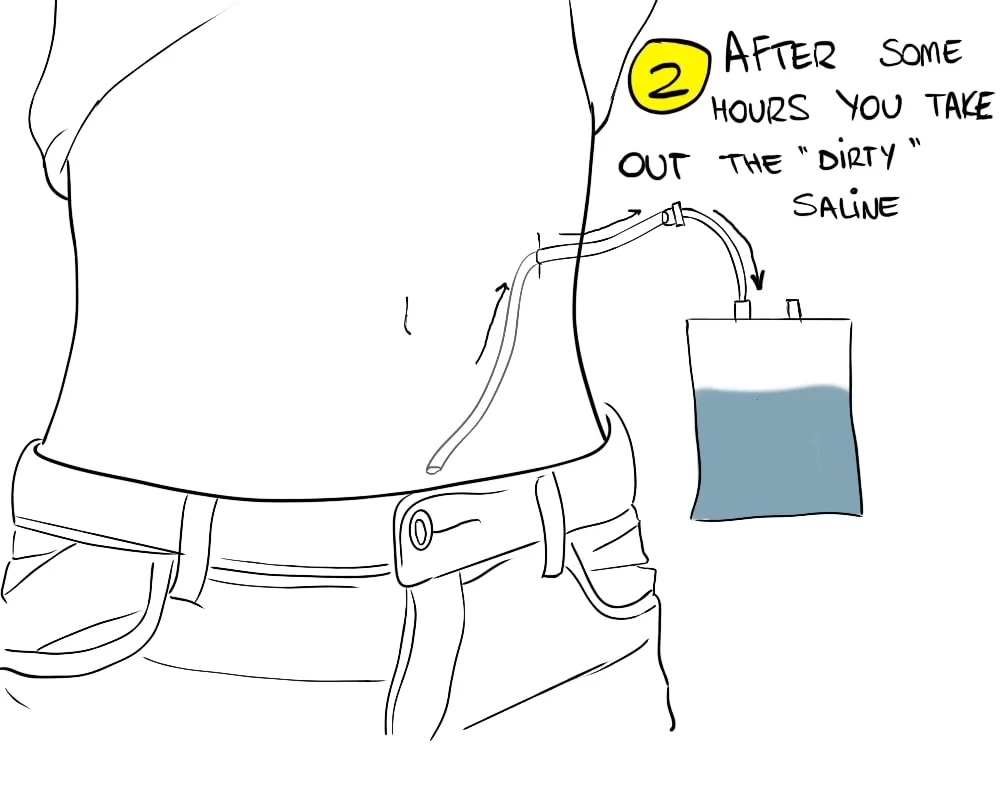If your kidneys don’t work any more you’ll need another way to clean your blood.
There are many conditions that can harm your kidneys, like tumors, immune disorders and abdominal trauma (maybe a car accident). If you lose one kidney you may do fine. But if you lose both of them you’ll need some way to replace your kidneys.
There are two main options: dialysis and kidney transplant.
In this post we’ll be talking about dialysis. In fact, there are two types:
- Hemodialysis: you have to go to the hospital 3 days a week (usually).
- Peritoneal dialysis: you do it at home.
In either case, it can be temporary or permanent. Sometimes, we use it until the patient can get a kidney transplant. In other cases, however, the patient is too sick to undergo an aggressive transplant surgery. They wouldn’t endure it.
Hemodialysis
It’s the most common type.
Hemodialysis consists of a machine that takes in your blood, cleans it, and then gives it back to you. Of course, it doesn’t take all your blood at once.
You’ll have to go to the hospital 3 times a week. Once there, they’ll make you sit on a coach and will connect you to the machine for around 4 hours.
They’ll connect you through a thick needle. Before your first session, they will perform some minor surgery on your arm to give you a fistula. That way, you will get a thick vein on your forearm that won’t break even when they inject that needle several times a week on it.
The machine will remove small doses of your blood and take it to the machine, which will clean it and give it back. It’s a continuous process where your blood flows though the machine.

It takes around 4 hours for the process to finish. After that, you are good to go.
Peritoneal Dialysis
This is the “do it at home” version. You’ll needs some preparation, though.
In this case you won’t need a fistula on your arm. Instead, you’ll need a catheter inside your abdomen. That catheter goes into your peritoneal cavity. That’s the space between your liver, spleen, stomach, your gut…
This space has a very thin lining that allows very small particles to cross it. And that’s what waste and toxins are, small particles.
Here’s what you do: every day you have to fill your peritoneal cavity through the catheter, using some special saline. That saline is going to sit there for some hours, slowly cleaning your blood from waste. After some time, you take the “dirty” fluid out.


You have to repeat this process several times a day. Yes, it’s a pain in the ass, but your blood gets waste all the time, and our kidneys are usually working 24/7 so you can’t stay too long without cleaning it.
* Did you know? People with no working kidneys don’t pee (or they pee very little).
Some Side Effects Of Dialysis
Even though both types of dialysis have improved a lot during the last decades, there are some common side effects.
For example, you may get muscle cramps and itchy skin, because minerals in your blood may be too high at times.
Also, you may get dizzy and weak because of low blood pressure—your body doesn’t enjoy that some of your blood is leaving your body.
Finally, if you are having peritoneal dialysis, there is some risk of infection though the catheter.
Leave a Reply